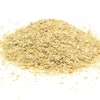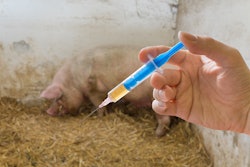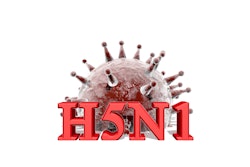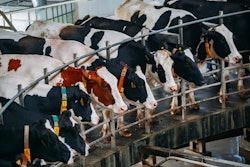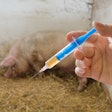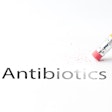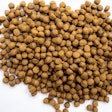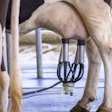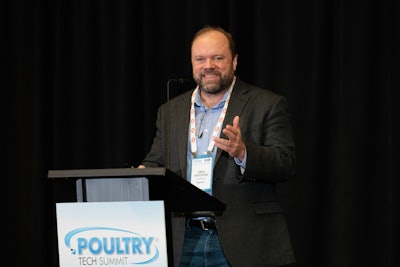
Using machine learning to assess farm risk for diseases and prescribe customized sanitation protocols can help reduce average downtime between poultry flocks while simultaneously improving feed conversion rates for future birds.
"We're understanding the microbial environment at those houses, but also understanding the past performance, controlling for things like seasonality and breed," Troy Hatlevig, vice president of product at Ancera explained at the 2025 Poultry Tech Summit.
"We're coupling that with data that we know about the dynamic environment upcoming, like microbial data, like humidity, like expected weather and temperature."
The program uses an input-trigger-action-outcome (ITAO) framework that analyzes multiple data sources — including microbial diagnostics, weather patterns, historical farm performance and equipment data — to predict optimal downtime periods for individual farms. The system then delivers specific sanitation protocols to broiler technicians and growers based on each farm's risk profile.
Downtime between poultry flocks is a critical time for breaking disease cycles. By allowing the poultry house microbiome – made up of microbes in the litter and on equipment – to process organic matter and compete with potential pathogens, downtime helps create a cleaner, healthier environment for the next flock to be introduced.
Microbial profiling drives decisions
The platform profiles each farm's microbial environment alongside historical performance data while controlling for variables like seasonality, breed and unusual events. Farms are then sorted into high, medium and low-risk categories based on their predicted microbial challenges for the upcoming grow-out.
Using this risk assessment, the algorithm selects from four configured downtime protocols: standard management for low-risk farms, extended downtime for high-risk operations, enhanced sanitation including waterline flushing and litter treatments or combined interventions. The microbial data generated through the diagnostic testing platform serves as a core input for these recommendations.
Protocols are delivered via text message to broiler technicians before pre-harvest meetings with growers, and software tracks compliance to ensure execution.
Performance improvements
Analysis showed the program reduced average downtime while delivering approximately a half-point feed conversion improvement in one test case. Statistical modeling confirmed positive feed conversion ratio impact even when accounting for uncertainty in the estimates.
"Even as they were cutting downtime, they were able to improve their feed conversion rate overall in the system," Hatlevig said.
The platform allows integrators to customize input factors and protocols based on their operational priorities beyond microbial monitoring, including chick sourcing costs or other market-specific variables.


